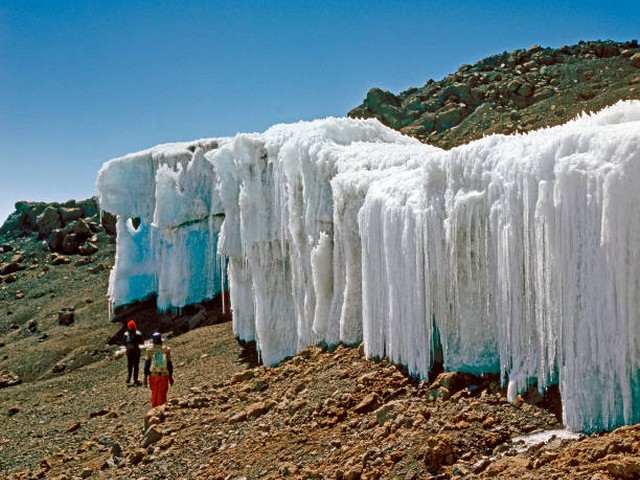Preparing Children for High Altitude Kilimanjaro Climbs
Embark on a Family Adventure to Remember
Imagine standing atop Africa’s highest peak, the majestic Mount Kilimanjaro, with your children by your side, basking in the glow of accomplishment and the breathtaking vistas below. At Kilimanjaro Centre for Trekking and Ecotourism (KCTE), we believe that climbing Kilimanjaro can be an enriching experience for families, especially for children who are ready to tackle this grand adventure. Preparing children for such a high altitude trek requires careful planning, training, and a hearty dose of inspiration. In this detailed guide, we’ll walk you through the essentials of getting your young adventurers ready for this life-changing journey.
Why Climb Kilimanjaro with Your Children?
Climbing Kilimanjaro is not only about conquering a physical summit but also about cultivating qualities like resilience, teamwork, and respect for nature in young hearts and minds. It’s a practical classroom where life lessons are learned through experience. The journey instills a sense of achievement and confidence that will benefit them in all walks of life.
Understanding the Challenges of High Altitude
Acclimatization: The Key to Success
High altitude can be challenging for anyone, and children are no exception. The air thins as you ascend, and oxygen levels decrease, which can lead to altitude sickness. Acclimatization is crucial. At KCTE, we recommend opting for longer routes that allow a gradual ascent and better acclimatization. This is particularly important when trekking with children, as their bodies need extra time to adjust to altitude changes.
Recognizing Altitude Sickness in Children
Children may not always communicate their discomfort as clearly as adults. Symptoms to watch for include nausea, vomiting, fatigue, and headache. A key part of your preparation will be teaching your children to speak up about how they feel physically and mentally.
Pre-Climb Preparation for Children
Physical Fitness: Building Young Mountaineers
Preparing for a Kilimanjaro climb starts months before the actual trek. Encourage regular physical activities like hiking, swimming, or cycling. The aim is to build stamina and get them used to prolonged physical exertion. Weekend hikes that gradually increase in difficulty can be particularly beneficial.
Mental Preparation: Instilling Resilience and Determination
Mental toughness is as crucial as physical readiness. Discuss the climb openly with your children. Focus on what to expect each day of the trek, the challenges they might face, and the amazing experiences ahead. Encourage them to set personal goals and visualize reaching the summit.
Gear Up: Dressing for Success
Proper gear is essential for a successful climb. Invest in good quality, child-sized mountaineering gear. This includes thermal layers, a waterproof jacket, proper boots, gloves, and a warm hat. Don’t forget a comfortable, appropriately sized backpack.
Dietary Considerations: Fueling for the Climb
High-energy, palatable, and nutritious snacks are crucial, especially as children’s appetites can decrease at high altitudes. Plan your food meticulously with the help of KCTE experts, focusing on a diet that keeps energy levels up and is easy to digest.
Choosing the Right Route and Season
Route Selection: Catering to Young Climbers
Routes like the Lemosho and the Rongai offer a gentler ascent and are more suited for children, providing scenic diversity that keeps the trek interesting for young minds. These routes also offer better opportunities for acclimatization.
Best Time to Climb
The best times to climb Kilimanjaro with children are during the warmest and clearest months, from December to early March and from June to October. This coincides with school holidays in many countries, making it convenient for a family adventure.
On the Mountain: Ensuring a Safe and Enjoyable Trek
Keeping it Fun and Engaging
Keep young climbers engaged by teaching them about the flora and fauna of Kilimanjaro and the different ecological zones they will pass through. Games and storytelling can also be great ways to keep their spirits up.
Safety First
Safety is paramount on the mountain. KCTE ensures that all family treks are accompanied by experienced guides and porters who are trained in emergency first aid and have experience in assisting young climbers.
Encourage Environmental Awareness
Climbing Kilimanjaro is a perfect opportunity to teach children about environmental conservation. Discuss the importance of leaving no trace and the broader impacts of climate change on mountain ecosystems.
FAQs: Preparing Your Child for Kilimanjaro
Q: What is the minimum age for children climbing Kilimanjaro?
A: The minimum age recommended by the Tanzanian government is 10 years, but suitability also depends on the child’s maturity and physical readiness.
Q: How can I monitor my child’s health during the climb?
A: Regular check-ins are essential. Teach your children to be open about their feelings and any discomfort. Our guides are also trained to monitor climbers for any signs of altitude sickness.
Q: Can children carry their own backpacks?
A: Yes, if it’s light. However, it is important that the backpack carries only what they absolutely need during the day.
Q: Are there special discounts for families?
A: Yes, KCTE offers family packages and special rates for children to make your adventure more accessible.
Conclusion: A Journey of Growth and Discovery
Preparing your children for a high-altitude climb on Kilimanjaro is an opportunity to bond as a family and instill valuable life skills. With the right preparation, your trek to the Roof of Africa will be a safe, enjoyable, and transformative experience.
Ready to plan your family’s adventure? Contact Kilimanjaro Centre for Trekking and Ecotourism (KCTE) today, and let us help you take the first steps towards the summit together. Embark on this journey of growth and discovery with KCTE, where we turn your high-altitude dreams into reality!




